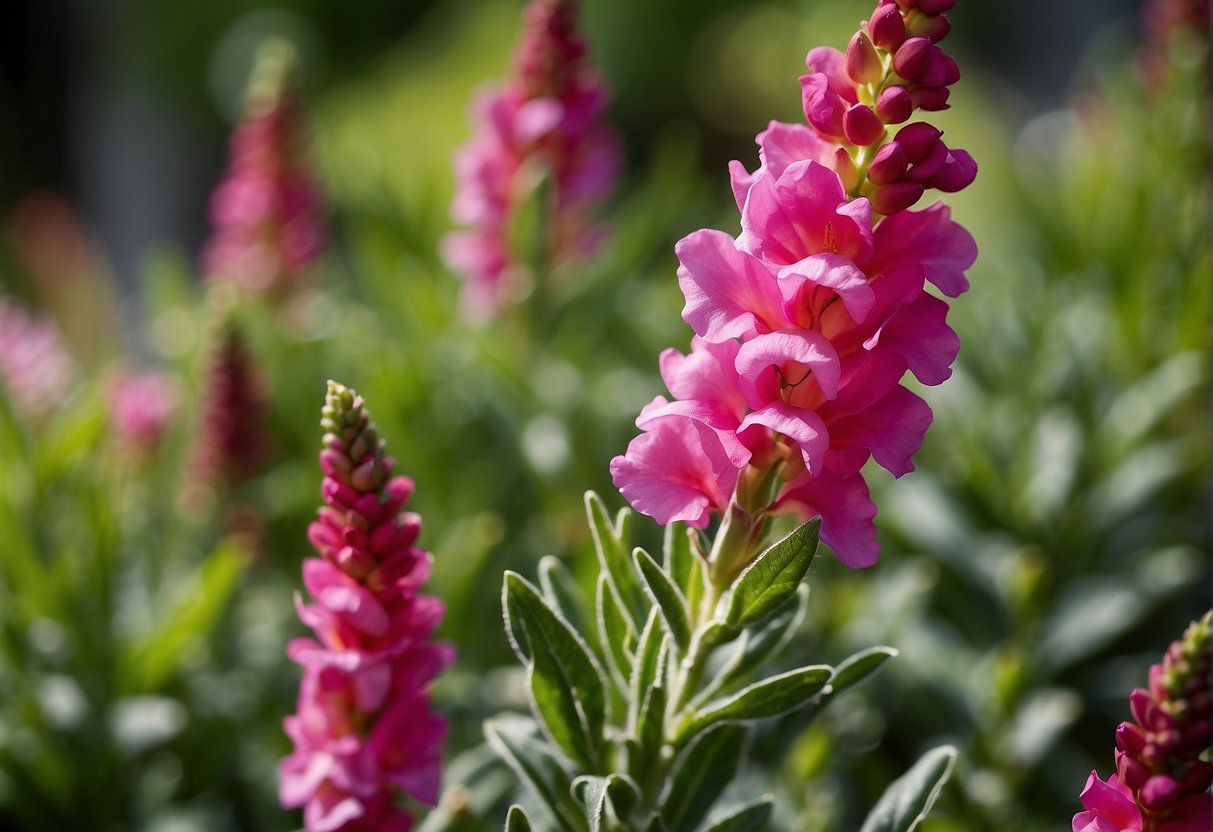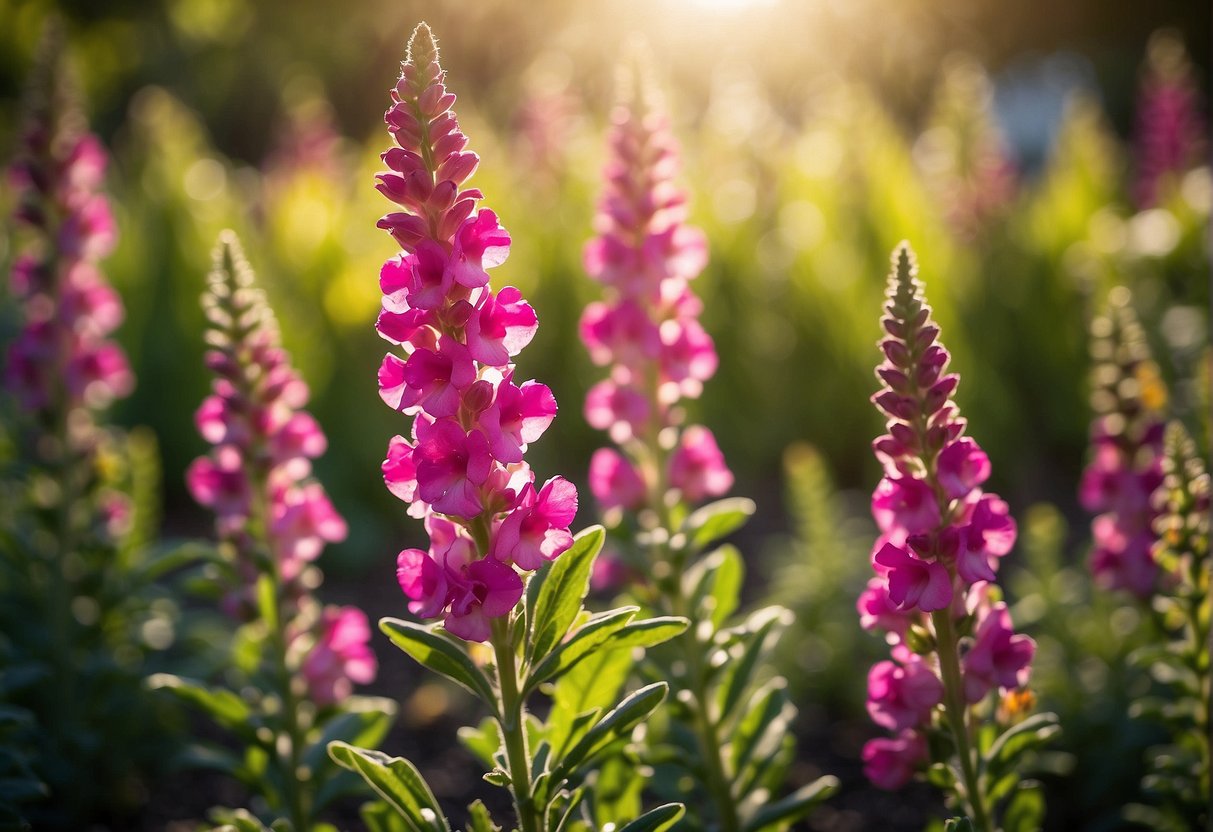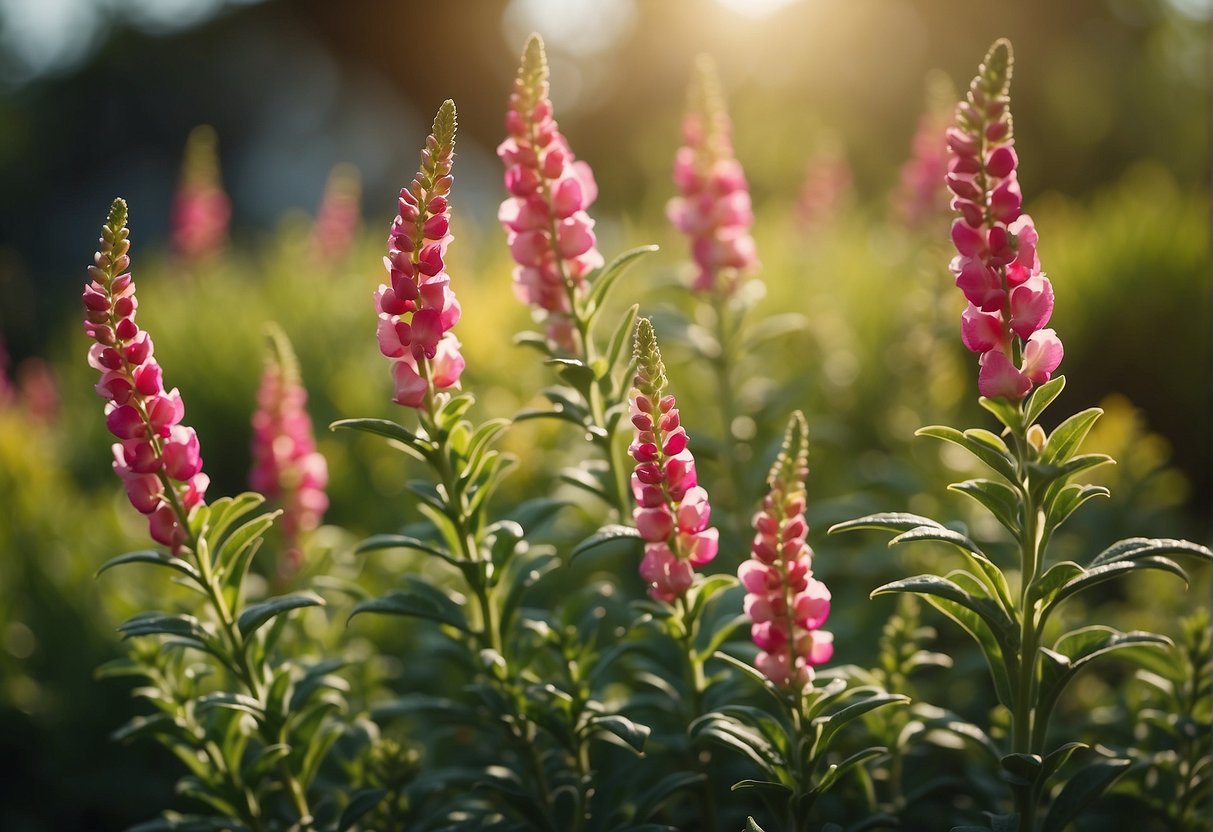snapdragon are a popular pick for gardeners looking to add a splash of color to their out-of-door space . These plants are have a go at it for their vibrant flowers , which do in a across-the-board reach of colors and sizes . However , one question that often arises when it add up to snapdragons is whether they are one-year or recurrent plants .
The answer to this question is that snapdragons can be both annual and perennial , count on the diverseness . one-year snapdragons will complete their entire biography cycle in one growing season , whileperennial snapdragonswill endure for multiple years . Some snapdragon are even considered two-year , intend they will live for two grow time of year before dying off . It ’s important to know which type of snapdragon you have for the right way care for it and insure it thrives in your garden .
Understanding Snapdragon Classification
snapdragon , also known as Antirrhinum majus , are a popularflowering plantknown for their vivacious colors and unique snap - like coming into court . Understanding the classification of snapdragons can be helpful in determine their growing patterns and lifespan .
Annual vs Perennial Snapdragon
Snapdragons can be classified as either one-year or repeated plant . one-year snapdragons finish their life cycle within one maturate season , typically lasting from spring to decrease . These flora are often grown as bedding flora or in container .
repeated snapdragon , on the other hand , have a longer lifespan and can survive for multiple growing seasons . They can be further divided into two categories : tender perennials and shortly - experience perennials . attendant perennials are plant that can last in modest winter climates , while unawares - lived perennials have a lifespan of around three to four years .
Antirrhinum Majus Explained
genus Antirrhinum majus is the scientific name for snapdragons . The plant belong to the Plantaginaceae menage and is aboriginal to the Mediterranean region . The name “ Antirrhinum ” comes from the Greek words “ anti , ” meaning like , and “ rhin , ” meaning nose , due to the plant life ’s snap - like flowers .
Snapdragons do in a variety of colors , including pink , reddish , yellow , and white . They are jazz for their ability toattract pollinatorssuch as bees and butterfly , making them a democratic choice for gardener .
In conclusion , understanding the categorization of snapdragons can be helpful in determining their growing formula and life-time . Whether you choose to grow annual or recurrent snapdragons , these works are sure to add a stir of color to any garden or container .

Optimal Growing Conditions
Snapdragons can thrive as both annuals and perennials , bet on the specific variety and growing conditions . To ensure the salutary growing and health of snapdragon , it is authoritative to ply them with optimum grow term .
Sunlight and Shade Requirements
Snapdragons require spate of sunlight to grow and flower . They opt full Lord’s Day or fond shadowiness conditions , with at least 6 hours of lineal sunlight per twenty-four hour period . In areas with blistering summers , snapdragon may benefit from some afternoon subtlety to prevent wilting .
Soil Preferences and Moisture
snapdragon prefer well - run out filth that is moist but not waterlogged . They can grow in a wide range of soil type , but perform practiced in loamy soil with a slightly acidic pH. It is important to regularly water snapdragon to keep the soil moist , especially during teetotal spell or spicy weather .
To aid snapdragon thrive , you should tally constitutive matter such as compost or well - rotted manure to the soil before planting . This can improve soil social structure and birth rate , as well as increase urine retentiveness .
Overall , providing snapdragons with ample sunlight , well - draining soil , and consistent wet can assist them grow and bloom to their full potential .

Planting and Care Guide
snapdragon are a popular option for gardeners due to their vibrant colors and long - lasting peak . Proper planting and care can facilitate ensure healthy growth and a bountiful display of flowers .
Starting Snapdragons from Seeds
Snapdragons can be started from seeds indoors or outdoors . Indoor sowing is commend for former blossom . pop out seed indoors 8 - 10 hebdomad before the last anticipate frost escort . Sow seeds in a well - enfeeble soil mix and extend with a fragile layer of soil . Keep the dirt moist and fond , around 70 ° F , until germination occurs in 7 - 14 twenty-four hours .
Transplant seedlings out of doors when they have recrudesce their second set of true leaves . Harden off seedling before transfer by gradually reveal them to outdoor conditions over the course of a week . Plant seedlings in a locating with full sunshine to fond tone and well - run out soil . Space plant 6 - 12 in apart depending on the variety .
Watering and Fertilizing Practices
snapdragon opt systematically moist soil but can be susceptible to root rotting if overwatered . urine plant deeply once a week , or more ofttimes during raging and dry weather condition . forefend overhead lacrimation to prevent the counterpane of disease .
Fertilize snapdragons every 4 - 6 weeks with a balanced fertilizer . void fertilise during periods of drought or high heat .
Pruning and Deadheading
Deadheading snapdragon can encourage continued blooming throughout the farm season . Remove pass flower by cutting the prow just above the next bent of leaves .
Pruning can also be done to promote bushier growth and foreclose legginess . Pinch back the steer of the stem when the flora is 6 - 8 column inch grandiloquent . Repeat every 4 - 6 week as needed .
By abide by these planting and upkeep guidelines , gardeners can love the smasher of snapdragons class after class .

Seasonal Growth and Blooming
snapdragon are a democratic option for nurseryman due to their vivacious colors and unique shape . They are a nerveless - time of year yearly that can blossom for several month . However , some snapdragons can also be grown as perennial in warmer climates .
Spring and Summer Care
In the spring , snapdragon should be planted in a position that experience full sun to partial shade . They prefer well - draining stain that is rich in constituent thing . Snapdragons should be watered regularly , but not overwatered , as they are susceptible to stem rot .
During the summer , snapdragon can be deadheaded to encourage more blooms . Deadheading involves removing fagged flowers to promote the growth of fresh ones . snapdragon can also benefit from fertilisation during the summer month .
Preparing for Fall and Winter
As fall approaches , snapdragons may start to pass up in growth and blooming . They are sore to frost and should be protect or take away before the first frost of the season . Snapdragons can also be make out back in the fall to promote new growth in the spring .
In warm climates , snapdragons can be grow as perennial . They may cover to bloom throughout thewinter month , but may require extra upkeep to protect them from frost . mulch around the foundation of the plant can help isolate the stem and protect them from freezing temperatures .
Overall , snapdragons are a various plant that can be acquire as an annual or recurrent . With proper fear , they can provide vivacious blooms throughout the produce season .

Pests, Diseases, and Maintenance
Common Snapdragon Challenges
Snapdragons are generally stout plants , but they can still return dupe to a few common pests and disease . Here are some of the most common challenge that snapdragon face :
Long-Term Snapdragon Health
To keep your snapdragons sound in the long - term , there are a few things you could do :
Frequently Asked Questions
Are snapdragons considered perennials in certain hardiness zones?
Snapdragons are typicallygrown as annuals , but they can act as perennials in some hardiness zone . In warm climates , such as zones 9 - 11 , snapdragon may outlast the wintertime and bloom again the undermentioned year . However , in cold climate , they will not come through the winter and should be replant as annuals .
What is the bloom time for snapdragons?
snapdragon typically bloom in the natural spring and summer , but they can blossom intermittently throughout the growing season if the right way manage for . Deadheading spent blooms and provide adequate body of water and fertiliser can encourage snapdragon to cover blooming .
How can you encourage snapdragons to bloom continuously?
To promote snapdragons to bloom continuously , deadhead spend bloom of youth regularly . This will prevent the flora from putting free energy into semen production and or else encourage it to grow more bloom . Additionally , furnish regular water and fertiliser can help keep the plant healthy and crashing .
Can snapdragons survive winter conditions?
snapdragon are not typically wintertime - hardy and will not outlive freeze temperature . In colder climates , they should be treated as annuals and replant each twelvemonth .
When is the ideal time to plant snapdragon seeds?
Snapdragon seeds should be planted in the former saltation , after the last frost has pass . They can also be planted in the drop for early bounce bloom , but this may not be possible in all climate .
Do snapdragons have the ability to self-seed?
Yes , snapdragons have the ability to self - seeded player . This intend that if allowed to go to seed , they may produce fresh plants the next year . However , the resulting plant may not be straight to the parent plant and may have unlike machine characteristic . Deadheading spent blooms can prevent self - seeding if desired .
